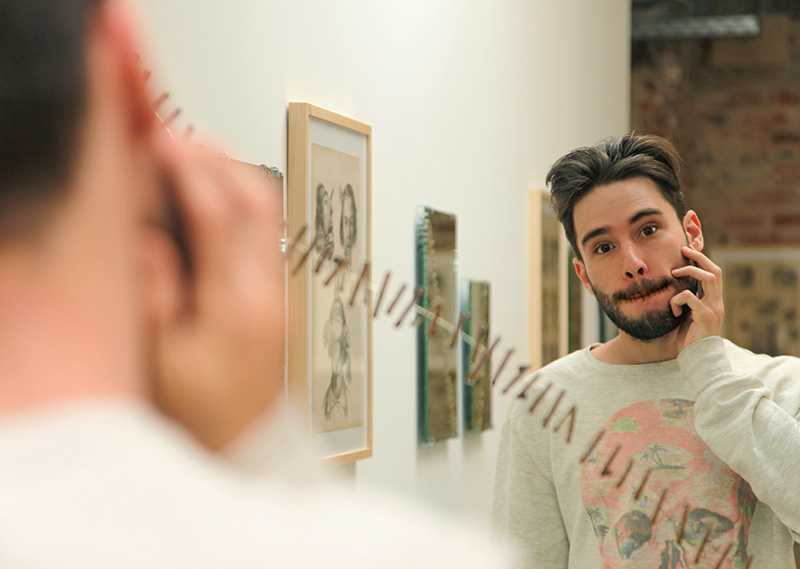wanderlust
Major Migraine: Stitching The Wounds Of Colonialism

After hearing Anish Kapoor’s declaration that he didn’t have anything to say as an artist, I wasn’t surprised to learn that another Berlin-based creative has analogous sentiments towards their role in the art world. In an interview with The Independent, French-Algerian artist Kader Attia admitted that he doesn’t see himself as an artist but rather as a researcher.
At his recently opened solo exhibition at KW, this couldn’t appear more true. Exhibiting in a labyrinth-style platform, Attia showcases the narrative of European and African relations of the past 200 years. With sculptures, projections and videos, he balances the roles of both creative interpreter and anthropologist. Does Attia add a significant voice to contemporary post-colonial dialogue? Or is he simply a history professor in disguise?
A Beautiful Mask
The last time I was at KW, it was a bleak, wet and grey December day. The courtyard was sad and desolate and was indistinguishable from Berlin’s myriad hinterhofs. Last week, however, when entering into the same enclosure, its beauty overwhelmed me: the trees were fully in bloom, visitors were scattered about at picnic tables enjoying coffee and a café barista was scribbling the day’s specials on a black chalkboard. This Berlin institution certainly was taking advantage of the weather, so it put me in the mood to see a wonderfully optimistic exhibition—despite appearing dark and gloomy. While the show inside wouldn’t disappoint me, it was in stark contrast to the idyllic scene outside.
Within KW’s distinct interior, visitors are warned that there is only one way into the exhibition—and, subsequently, only one way out. Attia has presented his latest works in a series of five acts spread throughout seven rooms where he wishes to examine topics of “repair” and “re-appropriation”. In the first room, the artist has installed a projector that methodically beams images of African LP records on the wall, while music from the presented artists is played. After walking through a long, black hallway adorned with African masks that have been covered in mirrors, I enter a far less claustrophobic space. In this second room, Attia has two projections of images that portray how African soldiers were used in European wars who fought both in their own countries and back in Europe. The juxtaposition is interesting—however, I find the content of the work far more engaging than what Attia has to say about it.
The next area is definitely the headlining installation in the exhibition. Large in size, the space consists of several metal shelves adorned not only with artifacts and pictures cataloging both war and traditions from Africa, but also includes large busts carved out of wood and marble. With these sculptures, Attia wishes to address the standards of beauty in Europe versus Africa.
While the African busts (carved meticulously by Italian stonemasons from marble) showcase the remarkable facial alterations tribesmen would implement on themselves, Attia's crudely carved wooden pieces are echoes of the crude plastic surgery that deformed soldiers would receive in the early 20th century. These works are complimented with broken mirrors primitively sewn back together and graphic surgical illustrations in the adjacent room. While the subject matter is informative and fascinating, Attia is also successful with his creative juxtaposition of varying mediums.
A Quick Escape
When an artist explores their roots so explicitly, it can often leave a bad taste in my mouth. Sometimes it appears too heavy handed—perhaps a little bit like a lesson in anthropology or history, but most of all it is alienating as it simply showcases what is already known without inventive elucidation. Attia, however, is successful with how he approached the still controversial topic of post-colonialism. After leaving the exhibition I felt relieved to be greeted by the beautiful courtyard outside. There I was able to get that wonderful espresso I smelled on the way in, and reflect on such a captivating show.
- KW Institute for Contemporary Art – "Repair. 5 Acts" Solo exhibition by Kader Attia – May 26th to August 25th, 2013 – Wed-Mon: 12pm-7pm, Thurs: 12pm-9pm Tues: closed
Article by James Shaeffer
Be the first to write a comment.
Your feedback


